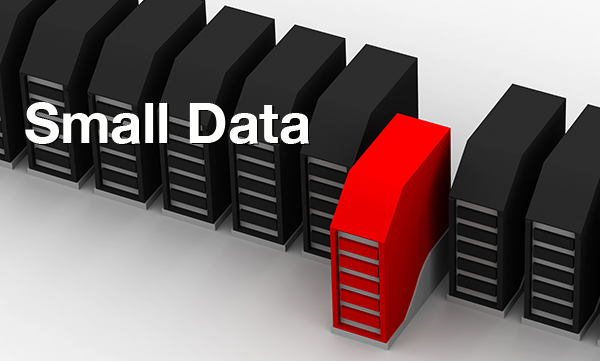Small Data: Finding more dough
“Big Data” is all the rage–information of extreme size, diversity and complexity used to predict consumer behavior, weather and more. It’s exciting, but not very relevant to the typical business owner. So what about “Small Data”? Small data is the information available to most businesses in your ERP, production planning, CRM or other systems you use today.
Locked inside these systems is information that can save you thousands of dollars or drive new growth initiatives. Today’s example is how one manufacturer improved the bottom line by $300K/year. But first, how and why is data hidden?
Trapped Data
Commercial software applications come with pre-built reports–a monthly sales forecast or a weekly order report. Most have add-on tools that allow your IT people to build custom reports. So, do you get what you need? As with many things, actual mileage will vary…
The information is hard to get because of the way these systems are built; to efficiently store the data and keep it secure. It’s organized very differently from what you see on the screen or report. A sales order shows customer name, items ordered, pricing, and addresses all together on the page. Chances are that data is stored in 5-10 different places in the database. That makes it hard to dig out answers if standard reports don’t already provide them.
Larger organizations use “Business Intelligence” or “Data Warehouse” applications to help analyze the data and gain insights. If you’re a smaller company chances are you don’t have these. But there is plenty you can do.
Finding More Dough
The first example is a commercial bakery serving both food service and retail grocers. The plant is in the east, serving national restaurant chains with Distribution Centers (DCs) across the USA. Shipping was a significant part of the landed cost, and it was a burden for both the bakery and chains. To simplify things for one national chain, the bakery developed a single shipping “blended rate” per case of product. The theory was that locations close by would subsidize the shipping costs to more distant locations. But it didn’t work out that way.
The bakery had a feeling they were getting the short end of the stick, but there weren’t any standard reports that would help.
Digging into the ERP data, they extracted the customer orders, product pricing, shipping receipts, and other pieces of the puzzle. After re-assembling the information, they could compare geographic locations, whether they picked up or had product shipped, and other factors. They could also see the total costs for shipping to a specific DC versus how much that DC had paid for shipping.
Guess what. The close-by DCs picked up for free, and the far flung DCs had it shipped. The bakery was losing money on every order they shipped to this customer–to the tune of $200K per year on shipping costs of about $1M. Not a very good plan.
The company designed a new shipping program that allowed any DC to pick up if they wanted, but also offered tiered pricing based on actual costs. If the DC ordered a full-truckload, the shipping price covered the costs. If they ordered less, the cost per case was higher. In this new approach, everybody won. The customer could pick up or use the pricing tier that met their needs. And the bakery was in the baking industry, not the shipping industry.
Small data helped the bottom line immediately. Looking back after one year the company changed a $200K loss into a net $300K improvement to the bottom line.
